The 2012 MacBook Air (11 & 13-inch) Review
by Anand Lal Shimpi on July 16, 2012 12:53 PM EST- Posted in
- Apple
- Mac
- MacBook Air
- Laptops
- Notebooks
Keyboard and Trackpad
The keyboard on the 2012 MacBook Air is the same as the 2011 model. You get a full sized keyboard on both the 11 and 13-inch models, with the alphanumeric keys measuring ~15 x 15mm. The function keys are half height on the 13 and even smaller on the 11, but there's no sacrifice in key size otherwise. Key travel and physical feedback are both as good as they can get on a chiclet-style keyboard. As Apple has now fully transitioned to this style of keyboard across all of its Macs, I can't really say I have any complaints about it. Apple's keyboard remains one of the best on the market.
The dedicated power button from the older Macs is gone and replaced with a power key that looks like another function key. The power key is functionally no different than the old power button - tap to turn on, hold to power down in the event of a hard lock.
The 2012 keyboard is nicely backlit, just like on every MacBook Air but the 2010. Apple offers fine grained controls over the keyboard backlight (16 adjustable levels). You can either choose to control it on your own or let the ambient light sensor control the intensity of the keyboard's backlight.
We spend so much time pointing out poor clickpads in the latest Ultrabooks that it's important to mention just how good the clickpad is in the MacBook Air. Apple continues to use the top hinged design on its glass covered clickpad. Clicks are easier towards the bottom of the pad than at the top where the hinge is. The clickpad is glass covered which makes it very smooth and comfortable to use. Finger rejection is handled extremely well under OS X, accidental clicks are very rare. I typically keep my thumb on the clickpad, near where the right mouse button would traditionally be, and mouse around with my index finger. While I normally have issues with this usage model on most of the clickpads I use, Apple's implementation is both the exception and the benchmark. It just works.
USB 3.0 Performance
USB 3.0 is alive and well on the new MacBook Air. Both ports support the standard and both OS X and the hardware supports the USB Attached SCSI Protocol (UASP). I have noticed that USB device compatibility is more finicky on the MacBook Air compared to the rMBP. Most devices seem to work fine but Kingston's HyperX Max 3.0 for example wouldn't work, although it worked fine on the rMBP. The hardware is actually detected by OS X, the drive simply never appears to Disk Utility or in Finder. A few folks have noticed something similar with other drives on Apple's support forums but the issue doesn't seem to have widespread implications.
USB 3.0 performance however is just as good as on the rMBP. I still need to grab a UASP enabled USB 3.0 device with 6Gbps SATA support to really stress the interface, but using Seagate's GoFlex USB 3.0 drive and a Kingston HyperX SSD in place of the mechanical drive I'm able to hit around 260MB/s:

Thunderbolt support comes courtesy of a 4-channel Cactus Ridge controller. The Thunderbolt port continues to be on the opposite side of the machine from the power connector. Anyone who owns a Cinema or Thunderbolt Display will bemoan the continued use of this configuration.
FaceTime HD Camera
Last year Apple introduced a 720p FaceTime HD camera to its MacBook Pro. The 2012 MBA inherits the same camera. Image quality remains acceptable as long as you're in a room with not terrible lighting.
Most of the Ultrabooks I play with these days try to mimic the FaceTime HD experience by using a 720p sensor. Arguably just as important as the sensor is the software that goes along with it. Photo Booth and Apple's FaceTime app are both extremely simple and quick to launch. I can't stress the importance of getting little details like this right when selling to general consumers.
SD Card Performance
The SD card reader on the 13-inch MacBook Pro had no compatibility issues with Patriot's EP Pro UHS-I SD card. Max performance of the reader appears to be capped at 40MB/s however:
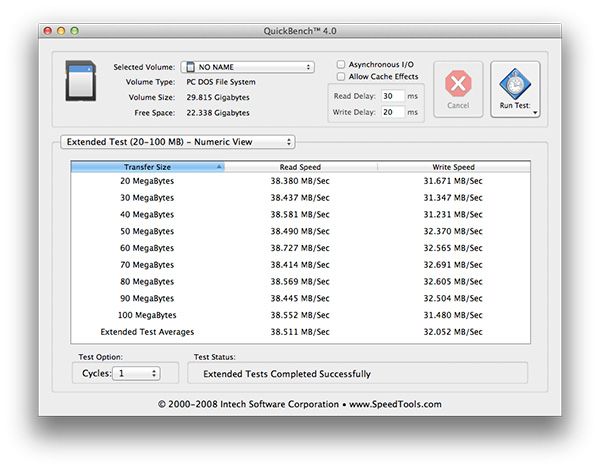
The rMBP by comparison can deliver more than 80MB/s in the read portion of this test. Even writes are faster at ~40MB/s on the rMBP compared to around 32MB/s here. It's a lot of these little things that contribute to the differences between Apple's MacBook Air and Pro lines.
WiFi Performance
Wireless connectivity remains unchanged from last year's model. Broadcom is on 802.11n WiFi duty with its BCM4322. Both 2.4GHz and 5GHz bands are supported. The same 2x2:2 configuration (2 send and receive antennas with 2 spatial streams) remains from last year as well.

I ran the 13-inch MacBook Air through the same three location WiFi test that I put the rMBP and 2011 MBP through, on both 5GHz and 2.4GHz. Performance on 2.4GHz was unusually low on the Netgear WNDR4500 I usually test with (10 - 20Mbps regardless of location) so I had to switch to the previous generation Apple Time Capsule to ensure there was nothing wrong with the notebook itself. All of the 2.4GHz MBA numbers have a star next to them to indicate that they aren't totally comparable as they're using a different AP. The 5GHz numbers all came from the Netgear however.
| Location 1 | Location 2 | Location 3 | |
| 2011 MacBook Pro (2.4GHz) | 124.0 Mbps | 12.6 Mbps | 61.6 Mbps |
| Retina MacBook Pro (2.4GHz) | 117.9 Mbps | 87.6 Mbps | 44.0 Mbps |
| 2012 MacBook Air (2.4GHz) | 95.7 Mbps* | 75.2 Mbps* | 31.2 Mbps* |
| 2011 MacBook Pro (5GHz) | 186.8 Mbps | 154.6 Mbps | 24.7 Mbps |
| Retina MacBook Pro (5GHz) | 227.7 Mbps | 156.8 Mbps | 33.7 Mbps |
| 2012 MacBook Air (5GHz) | 159.4 Mbps | 97.0 Mbps | - |
Overall WiFi performance is decent but obviously not as good as what you get from a MacBook Pro. Looking back at the results I almost wonder if the 2011 MBP wasn't showing some of these weird 2.4GHz issues on the Netgear router as well.
In the best conditions on 5GHz you can hit around 160Mbps, but you pretty much have to be right next to a good AP for that to work. Across a large room or in an adjacent one just under 100Mbps is possible on 5GHz as well. Go further out and you'll have to switch over to 2.4GHz.
There are no wired network options by default, however Apple's Thunderbolt to Gigabit Ethernet adapter works just fine on the new Air as well as the rMBP.
MagSafe 2
MagSafe 2 makes an appearance on the new MacBook Air, although it's curiously absent from the non-retina MacBook Pro. Eventually I'd expect all Macs to use MagSafe 2. The current state of things is likely temporary fragmentation. Similar to the rMBP, the actual power adapters themselves haven't changed: 45W is all you need for both systems.
Ivy Bridge on Air
Apple keeps its CPU options pretty simple and straightforward. You get a choice of three different CPUs, all dual-core, all rated at a 17W TDP. The Core i5-3317U comes standard in the 11, the i5-3427U comes with the 13, and both systems can be upgraded to the Core i7-3667U.
The breakdown between the chips is below:
| Apple 2012 MacBook Air Comparison | |||||
| 1.7GHz dual-core | 1.8GHz dual-core | 2.0GHz dual-core | |||
| Standard On | 11-inch MBA | 13-inch MBA | Optional for Both | ||
| Intel Model | Core i5-3317U | Core i5-3427U | Core i7-3667U | ||
| Base Clock Speed | 1.7GHz | 1.8GHz | 2.0GHz | ||
| Max SC Turbo | 2.6GHz | 2.8GHz | 3.2GHz | ||
| Max DC Turbo | 2.4GHz | 2.6GHz | 3.0GHz | ||
| L3 Cache | 3MB | 3MB | 4MB | ||
| AES-NI | Yes | Yes | Yes | ||
| VT-x | Yes | Yes | Yes | ||
| VT-d | Yes | Yes | Yes | ||
| TDP | 17W | 17W | 17W | ||
| Processor Graphics | Intel HD 4000 | Intel HD 4000 | Intel HD 4000 | ||
| GPU Clock (Base/Max) | 350/1050MHz | 350/1150MHz | 350/1150MHz | ||
The Core i7 upgrade is likely worth it if this is going to be your primary system for an extended period of time, particularly if it's acting as a desktop replacement. As a mobile device the standard CPUs are quite fast. If you're an annual upgrader, save your money, but if you're going to hold onto the system for a while and do a lot of heavy work on it, the upgraded CPU is probably worth it.
There is a known bug with the upgraded CPU under Windows today. Turbo Boost is disabled under Windows on the 3667U, although it's fully functional under OS X. Apple is aware of the problem and I'd expect a fix at some point, but there's no indication of when.


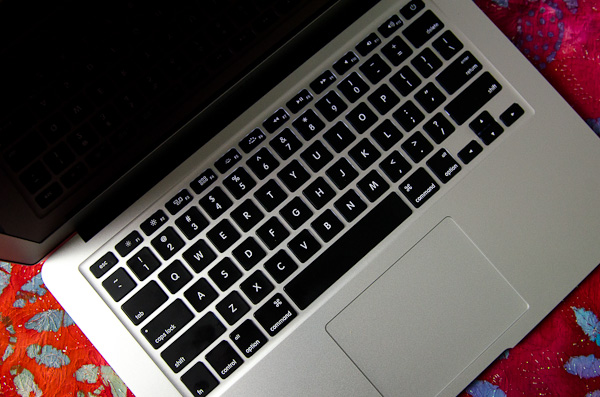
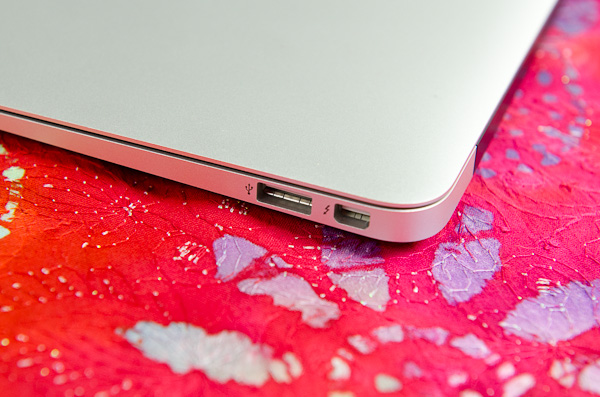

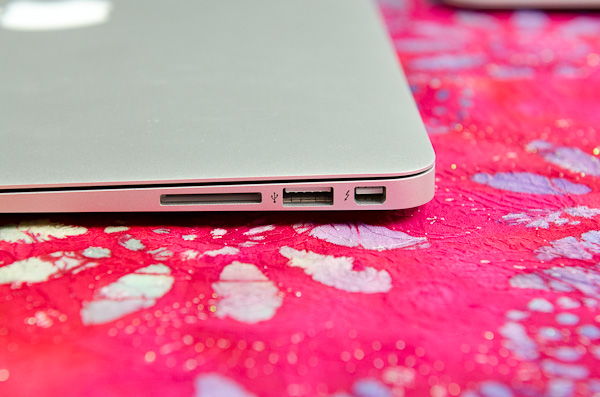
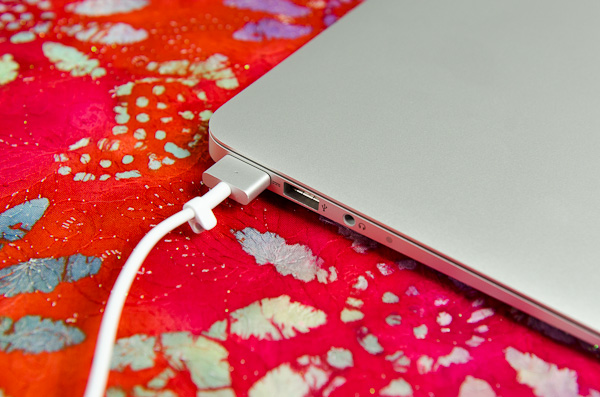








190 Comments
View All Comments
Osamede - Tuesday, July 17, 2012 - link
This Y5 was highly portable. If you never used one you have no idea. It was wedge shaped. And the shape allowed for durablity. It was military grade and rated to survive a drop of several feet. And yes STILL only 3.5 lbs, In 2004.Besides its now 2012, give us a call when Apple manages to bring to market a 14" laptop with optical drive at 3.5 lbs.. Only God knows the kind of hype we would have heard it it was Apple doing what Panasonic managed damn near a decade ag.
There was also the even smaller Panasonic W series and before that Sharp had some really good products with the Actius series at really good prices. And now thats going back to probably 1998 or even earlier
Of course Apple fanboys imagine that the world began when Apple launched the MacBook Air. Pschew.....
KPOM - Tuesday, July 17, 2012 - link
Apple isn't going to make any more notebooks with optical drives. Once the classic MacBook Pro is phased out, optical drives are history at Apple. If you notice, most Ultrabooks lack them, as well.A wedge design topping out at 1.9" thick is still pretty bulky. Obviously it was designed for a niche audience, since they aren't selling them anymore. From the specs in 2007 it had a Core Duo 1.66GHz, topped out at 1.5GB RAM, and was very expensive. The keyboard also looks cramped.
http://www.trustedreviews.com/Panasonic-ToughBook-...
I'm not disputing that there were ultraportables before the MacBook Air. Heck, I've even pointed to the PowerBook Duo. I've always been a fan of ultraportables and though they were a long-neglected category. Apple itself didn't have one for 2 years after the 12" Powerbook was dropped.
Most ultraportables were slow sellers that were quietly abandoned. To its credit, Apple stuck with the MacBook Air. A lot of Apple fans were even calling for Apple to drop the MacBook Air as late as September 2010. However, they stuck with it and continued to perfect the design. It's indisputable that the release of the $999 11.6" MacBook Air in October 2010 launched the concept of a mainstream ultraportable.
Osamede - Friday, July 20, 2012 - link
Nice try with the red herring about optical drive.The Panasonic was 3.5 lbs with Optical dive. Take that weight out and you have a 14" laptop with 1400 x 1050 at 3.2 lbs.....in 2006.
And yet according to you we are all supposed to roll over in supplication because in 2012 Apple is selling 13" laptops that weight 3lbs. Spare me the hype. Even The 2010 Sony Z is already a superior laptop compared to even todays "latest" MacBook Air, let alone the 7 year old Panasonic model.
Some of you swallow marketing BS and think it is fact.
KPOM - Friday, July 20, 2012 - link
Red herring? You are the one claiming that Apple should be putting in optical drives if they want to brag. My point is that optical drives are mostly passé. Intel hasn't made it part of the Ultrabook standard. Sony's Vaio Z is an impressive machine, but at more than twice the cost of the base MacBook Air it had better be.I'm not saying we need to roll over in supplication. What I am saying is that Apple transformed the ultraportable from a niche device to a mainstream device. My whole point, which your red herring about Panasonic Toughbooks and Sony Vaios ignores, is that ultraportables had been around for a decade but weren't popular devices until Apple got the formula right. Maybe Panasonic could have made a 14" laptop with 1400x1050 at 3.2lbs in 2006, but they didn't. Maybe Sony could have made a $999 Sony Vaio in 2010, but they didn't. Apple DID make a $999 MacBook Air in 2010. Apple DID make an ultraportable with a full size keyboard and super slick trackpad in 2008, and they DID make it affordable in 2010, and they DID take the drastic step of dropping hard drives and going exclusively with SSD storage in 2010.
phillyry - Tuesday, March 26, 2013 - link
You can't just say that this other laptop was lighter than it actually was because it would be lighter if it didn't have an optical drive that it did have. Confused much? That's because it doesn't make sense. Your logic is flawed. It either had the drive and the weight and bulk that go with it (as it did) or it didn't (as in your imaginary best case).phillyry - Tuesday, March 26, 2013 - link
Also, Apple is phasing out the optical drive. No red herring there.KPOM - Tuesday, July 17, 2012 - link
"Of course Apple fanboys imagine that the world began when Apple launched the MacBook Air. Pschew..... "Actually a lot of "Apple fanboys" HATED the original MacBook Air.
Read some of the comments to this article: http://www.macworld.com/article/1131583/macbookair...
As for optical drives, it's 2012. Did you complain when Apple stopped supporting the floppy drive, too? I don't see any optical drives on Microsoft's Surface Pro.
phillyry - Tuesday, March 26, 2013 - link
The devices you refer to were not mainstream.will54 - Monday, July 16, 2012 - link
"While 1440 x 900 is a bit much on a 15-inch MacBook Pro, I'd say it's near perfect on the 13-inch Air. If Apple were to do the Retina treatment on here, it'd be magnificent." This line is a bit confusing, can you explain further?Tegeril - Tuesday, July 17, 2012 - link
I assume he intended to mean that the 15" screen is too large for 1440x900 as the pixels are quite large, but on a 13" screen it is ideal.